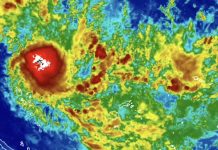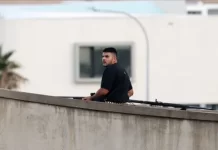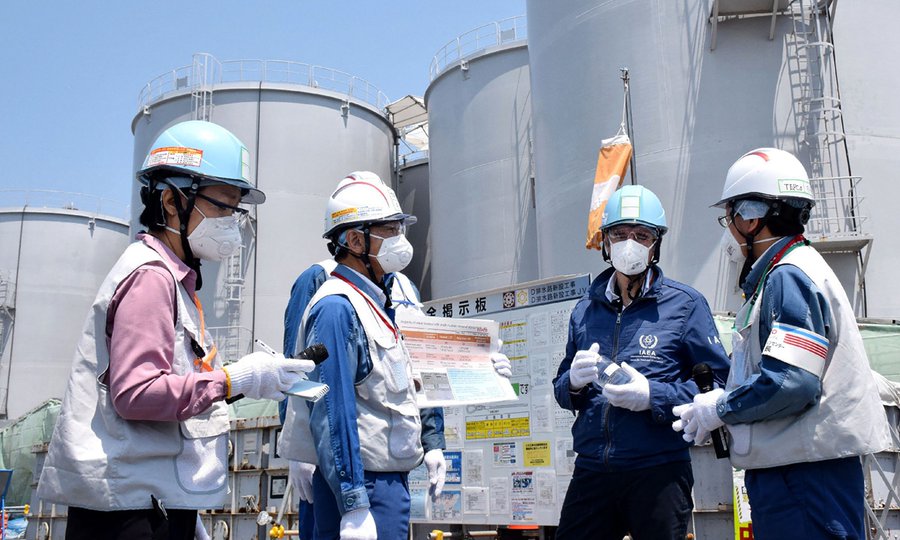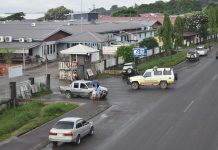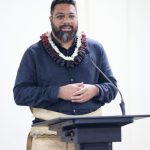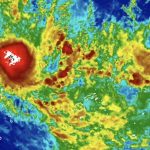Independent nuclear experts have offered to drink water and eat fish from the Pacific Ocean after Japan dumps its nuclear waste water into the Pacific.
Japan is planning to ditch over one-million tonnes of ALPS-treated radioactive wastewater from the damaged Fukushima Daiichi Nuclear Power Plant into the Pacific Ocean over 30 to 40 years starting from sometime this year.
The New Zealand and Australian experts told media at an online panel discussion hosted by the New Zealand Science Media Centre that Japan has good intentions.
The experts said they believe that as long as the wastewater is tested before it’s released the operation will be safe.
Two even went as far as saying they would take a sip of the treated wastewater.
“I would drink the water. I mean, it’s like going down to the beach and swallowing a mouthful of water when you’re swimming.
“It’s saltwater. I prefer the desalinated before I drink it,” University of Auckland physics senior lecturer Dr David Krofcheck, who specialises in nuclear physics and natural radiation from the environment, said.
“Would I eat the fish? Yes, I would,” Adelaide University School of Physics, Chemistry and Earth Sciences Associate Professor Tony Hooker added.
The contaminated water has been used to cool the melted reactor of the damaged Fukushima Daiichi Nuclear Power Plant.
More than 1000 tanks are now full and Tokyo Electric Power Company (TEPCO) is running out of storage space.
Japan has said it will treat the water to ensure it is harmless. It will also dilute the water and then release it into the Pacific Ocean.
Dr Krofcheck said that option is the best one.
“That’s probably the least bad option. Not that that’s a bad option. Because the dose, or the amount of Tritium being diluted is so small. But I think the least bad option is releasing.”
Ocean circulation modeller and researcher in Taiwan, Professor Chau-Ron Wu, told media he predicts the water from Fukushima will take 2-3 years to reach North America, one year to get to Taiwan and sweep across much of the Pacific.
No release date has been set, but Associate Professor Tony Hooker said, what we do know is, “The water is going to be released in [northern hemisphere] summer 2023.”
“I think the release is imminent. And I guess that will be a decision for the Japanese government. Ultimately, they can make that decision. They don’t need to rely on the International Atomic Energy Agency or any other agency.”
He said as long as it is only Tritium and Carbon 14 that’s released, and in small quantities, he is confident it will be safe.
Dr Krofcheck agrees: “I’m very comfortable with releasing it, as long as we can guarantee the Royal Science Society can guarantee that the nasty Strontium, Caesium, Iodine, Cobalt 60 can be removed”.
They will be removed by an Advanced Liquid Processing System (ALPS).
“So, most of the ALPS processes are using a Zeolite clay and which is very absorbent. Once the water has gone through that the radionuclides are bound to a solid. You can dry that out and store it as radioactive waste,” Hooker explained.
“I really thought they reconsider it”
There is still a lot of uncertainty across the Pacific about the release project.
Japan is in talks with the Pacific Islands Forum and has been providing data to their independent expert panel to analyse, which Hooker is a part of.
He acknowledged those who want to end nuclear waste dumping, which he says already happens around the world.
“Whilst there’s no issues from a radiation safety perspective about putting this radiation into the sea, should there be some level of discussion or intensive research about how we can minimise disposing into the sea in the future?”
A Mā’ohi anti-nuclear activist in Tahiti, Hinamoeura Cross, found the news of Japan pushing forward with its plans despite backlash retraumatising.
“I’m really shocked by what the Japanese are going to do. We know that they have planned that for many years, but I really thought that they will reconsider that,” Cross said.
For her, all nuclear issues are personal. Japan’s plans are of interest in particular as they impact her ocean, the Pacific.
“I remember my great grandmother and my grandmother that were sick. Then my mum and my auntie, they had the thyroid cancer,” Cross said.
When Cross was around 10, her sister got sick and at 23-years-old she was diagnosed with leukaemia.
All of the women she loves and looked up to were “poisoned” by French nuclear testing in the Pacific, she said.
Now that she is a mother of two, her voice has become staunchly against nuclear colonialism. She wants better healthcare for survivors of French nuclear testing.
“I’m anxious about the health care of my children; are they going to be sick or not? We really need this healthcare in Tahiti because of the 193 Nuclear bomb (tests),” Cross said.
Pacific leaders have been voicing their views on the upcoming release, which Japan says it needs to do in an effort to make progress on decommissioning the power plant.
Papua New Guinea Prime Minister James Marape is the latest to issue his support after being assured of the project’s safety by Japan.
Safety is a sentiment echoed by TEPCO, the owners of the plant.
“The release into the sea from the Fukushima Daiichi Nuclear would be the most realistic approach,” TEPCO Chief Officer for ALPS treated water management Junichi Matsumoto told RNZ Pacific in January 2023.
The dumping operation is expected to take between 30 and 40 years as it needs to be treated by the ALPS system and then diluted by sea water to meet regulatory standards.
The International Atomic Energy Agency (IAEA) is reviewing the processes.
The IAEA’s latest report has found TEPCO has managed to demonstrate it can measure the radionuclides in the treated water stored on site accurately and precisely.
SOURCE: RNZ PACIFIC/PACNEWS




